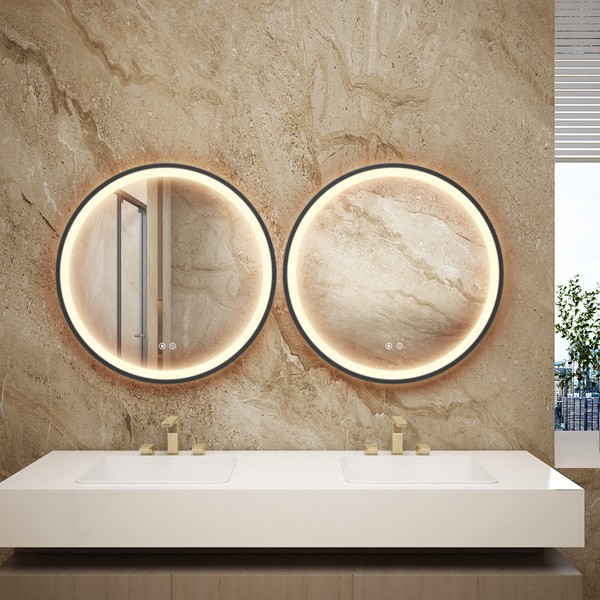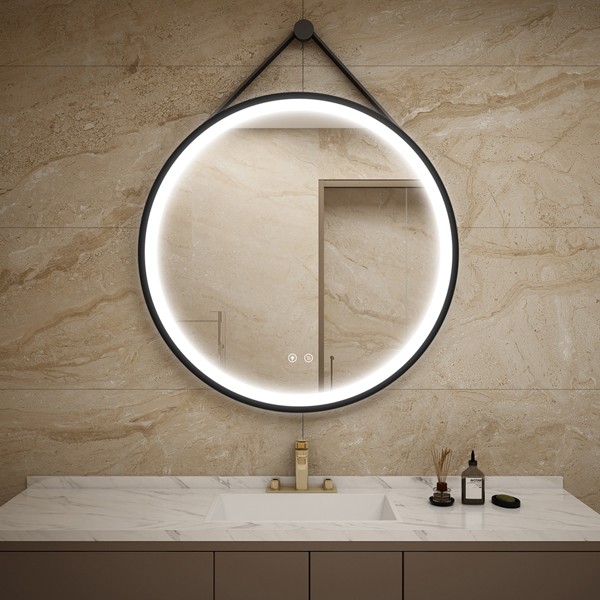Are you facing the disappointment of a desilvered mirror? You're not alone. Many mirror owners have dealt with this issue and have come up with solutions to restore the charm of their beautiful pieces.
Understanding the cause of desilvering is important because it occurs when the silver or aluminum layer on the back of a mirror wears away due to moisture or damage. To ensure your mirrors maintain their beauty, it's crucial to learn about preventive measures and solutions. By taking care of your mirrors, you can maintain an elegant ambiance in your space.

Desilvering and resilvering of mirrors
If you have an older or lower-quality mirror, you may come across an issue with desilvering. This happens when the silver coating on the back of the glass, responsible for making it reflective, begins to deteriorate or rub off. This can lead to dark spots or streaks on your mirror's surface. But don't fret, there is a solution to restore your mirror's appearance known as resilvering.
Desilvering occurs when the silver layer on the back of the glass begins to deteriorate due to factors such as humidity, moisture, and age. This can result in a less clear reflection over time.
To avoid desilvering, the merchant suggests taking a few precautions. This includes making sure your mirrors have a protective coating to maintain the silver layer, regularly cleaning them, and protecting them from excessive moisture or humidity.
If your mirror has already experienced desilvering, the resilvering process might be necessary. This involves removing the damaged silver coating, carefully cleaning the glass surface, and applying a new layer of silver. It's usually best to seek professional assistance or carefully follow detailed instructions if you plan on attempting this yourself.
Here are some steps to help with the resilvering process:
-
Upgrade the mirror's surface by removing the old silver coating.
-
To ensure a spotless finish, carefully clean the glass to eliminate any remaining residue or dust.
-
Add a fresh layer of silver using a specialized chemical solution.
-
The silver should be allowed to dry before applying a protective backing.
Gain a better understanding of desilvering and resilvering to properly care for your mirrors and maintain their reflective quality. Remember that taking preventive measures is key to delaying desilvering, and in case of need, resilvering can restore your mirror's appearance.
Mirror desilvering causes
Effect of Moisture
Prevent desilvering in your mirrors by keeping them away from areas with excess moisture, such as bathrooms or near water sources. Moisture can damage the silver coating and cause black edges, so it is important to properly ventilate your mirror's surroundings to avoid moisture buildup.
Ammonia and Oxidation
To keep your mirrors in good condition, avoid using ammonia-based cleaning solutions as they can cause desilvering by reacting with the silver layer and causing oxidation. Instead, opt for mild and ammonia-free cleaning solutions. It is also important to keep your mirrors away from harsh chemicals and direct sunlight to prevent oxidation.
Tarnishing and Mirror Rot
To prevent tarnishing and mirror rot, it is important to consistently clean and protect your mirror from extreme temperature changes. Neglecting maintenance, like infrequent cleaning and polishing, can cause the silver layer to deteriorate. Additionally, being exposed to high temperatures in dry environments can speed up the process. Remember to regularly maintain and care for your mirror to avoid these issues.
Detecting Desilvering
Dark Spots and Black Edges
Detecting desilvering early is crucial for proper mirror maintenance. Black edges and dark spots are clear indications that the reflective coating on the back of the mirror is lifting and wearing away. Over time, these spots may expand and affect the overall appearance of the mirror.
To check for desilvering, examine your mirror in a well-lit area. If you see dark spots or black edges, it's possible that desilvering has started.
Dark Streaks
Another indication of desilvering in your mirror is the appearance of dark streaks. These streaks can occur alongside dark spots and black edges or on their own. Like the other signs, dark streaks suggest that the mirror coating is degrading.
When inspecting your mirror for desilvering, carefully check for any streaks. Make sure to differentiate between dirt or marks that can be easily cleaned off. If the streaks remain even after cleaning, this could be a sign of desilvering.
Regularly checking your mirror for dark spots, black edges, and streaks can help detect desilvering early on. This allows for proper maintenance and repair, keeping your mirror in top condition and enhancing your space.

What can be done to prevent mirror desilvering?
With the proper care and maintenance, your mirrors can stay bright, reflective, and free from desilvering. Desilvering can occur when the silver coating behind the glass deteriorates due to factors such as time, moisture, poor upkeep, or exposure to heat. This section will provide helpful tips on preserving your mirrors and preventing desilvering to keep them looking their best.
1. Regular Cleaning
Regularly cleaning your mirrors is crucial in preventing dust and grime buildup. To preserve the surface, use a gentle glass cleaner and a soft microfiber cloth for polishing. Avoid using abrasive cleaners or scrubbers as they may damage the silver coating. For optimal results, spray the cleaner onto the cloth instead of directly onto the mirror to avoid excessive moisture that can cause desilvering. Following a proper cleaning routine will help keep your mirrors in superb condition.
2. Mind the Environment
To keep your mirrors in good condition, it's important to shield them from moisture, heat, and direct sunlight. In highly humid environments, such as bathrooms, it's essential to ventilate the space to prevent damage to the mirror. This can be achieved by using exhaust fans and keeping windows open while showering. Also, avoid placing mirrors near heaters or in direct sunlight to avoid any heat-related damage.
3. Paint Protection
When updating your home with paint or new decor, it's important to safeguard your mirrors to prevent unintentional paint splatters and damage to the reflective surface. Cover them with a plastic sheet or painter's tape along the edges to block paint from seeping through. If any paint does get on the mirror, gently remove it with a scraper or an appropriate cleaning solution once the project is complete.
4. Timely Repairs
If you see desilvering along the edges or cracks in your mirror, it's important to address them promptly to prevent further damage. For smaller cracks, a glass repair kit can be used, while a resilvering spray can help with minor black spots. If the desilvering is severe, it may be best to seek professional mirror resilvering services.
Extend the lifespan of your mirrors and prevent desilvering by following these simple mirror maintenance tips. Keep them looking their best with these straightforward instructions.
 Shanghai Divas Glass Co.,Ltd
Shanghai Divas Glass Co.,Ltd
